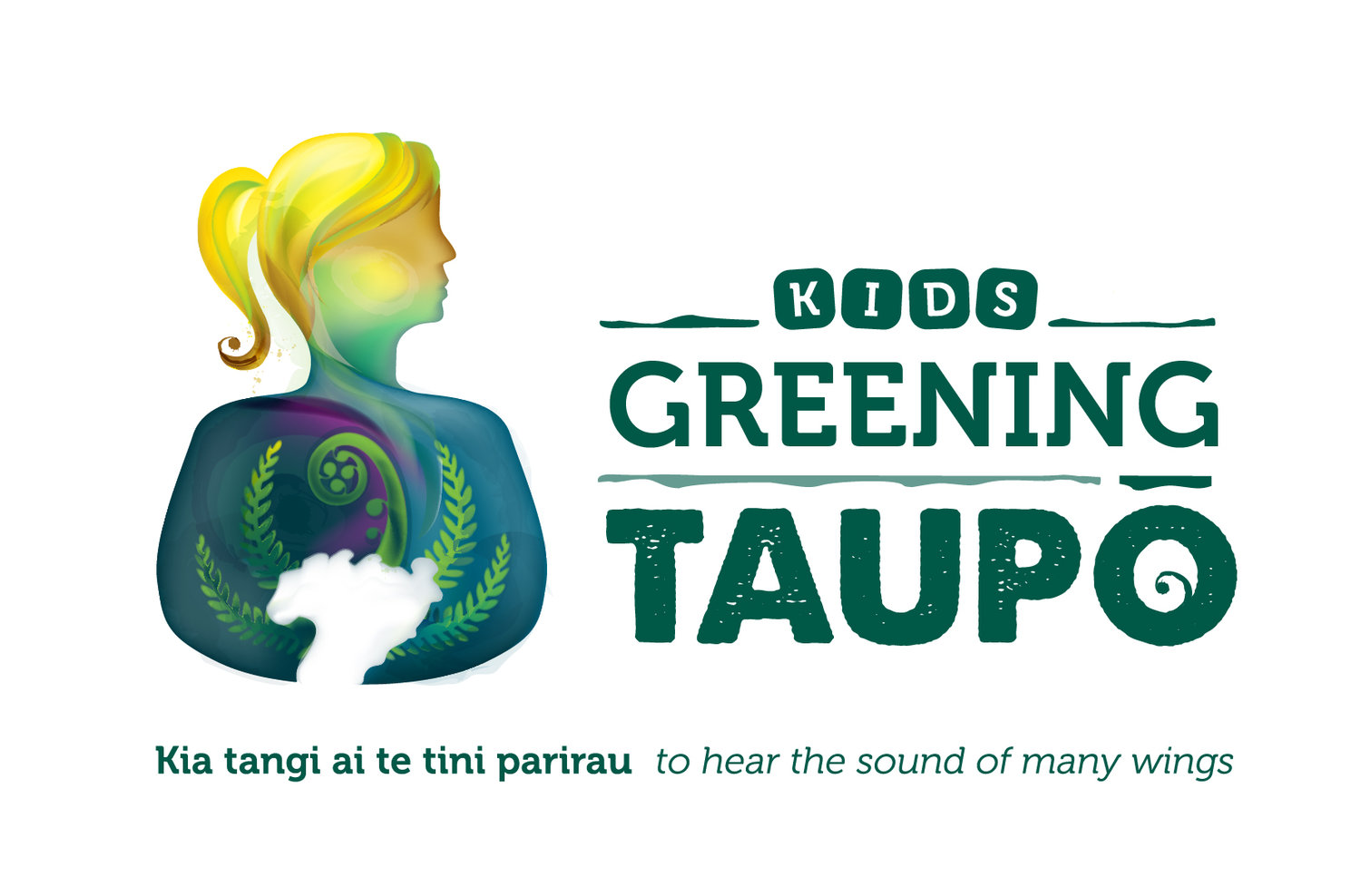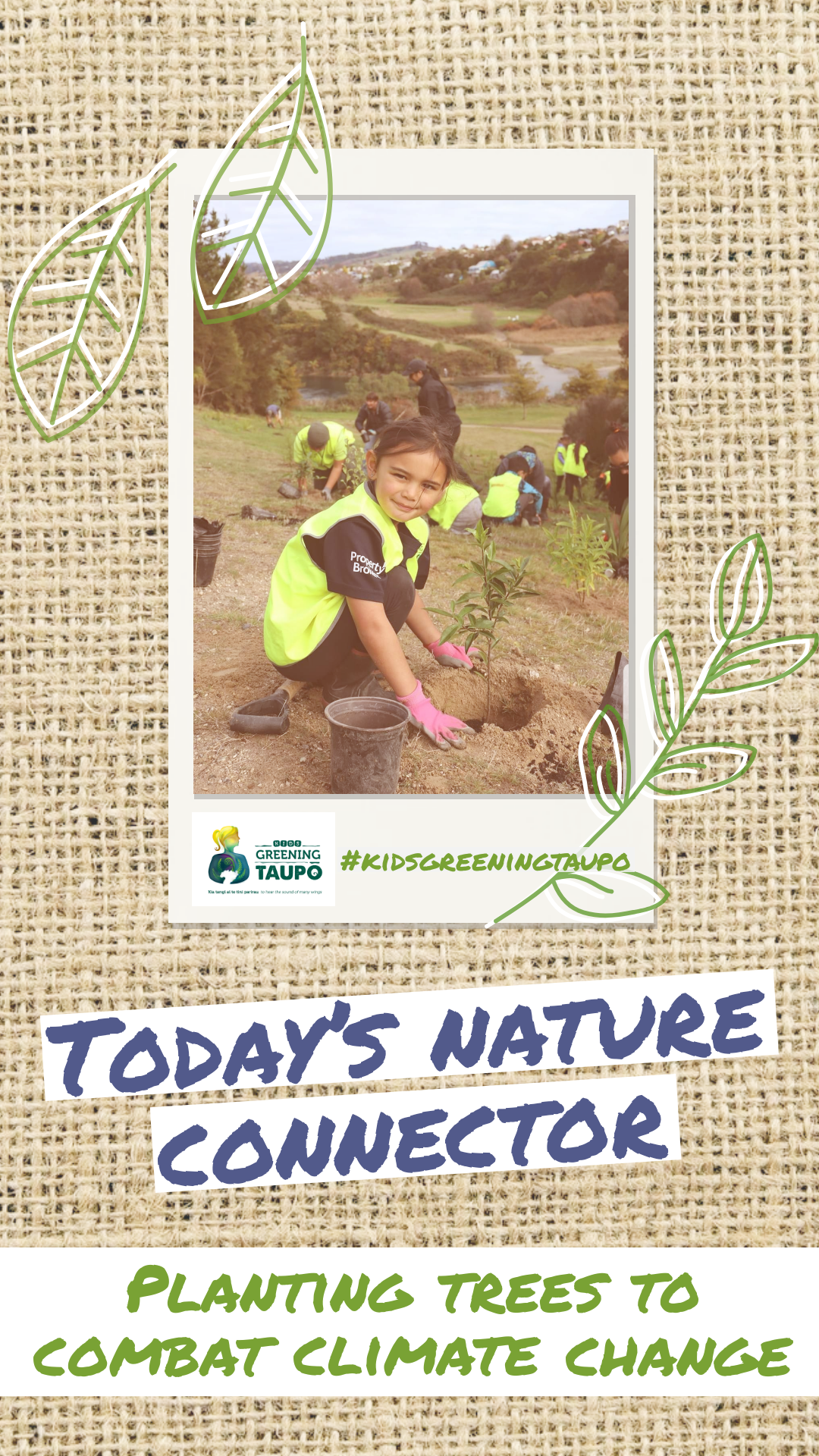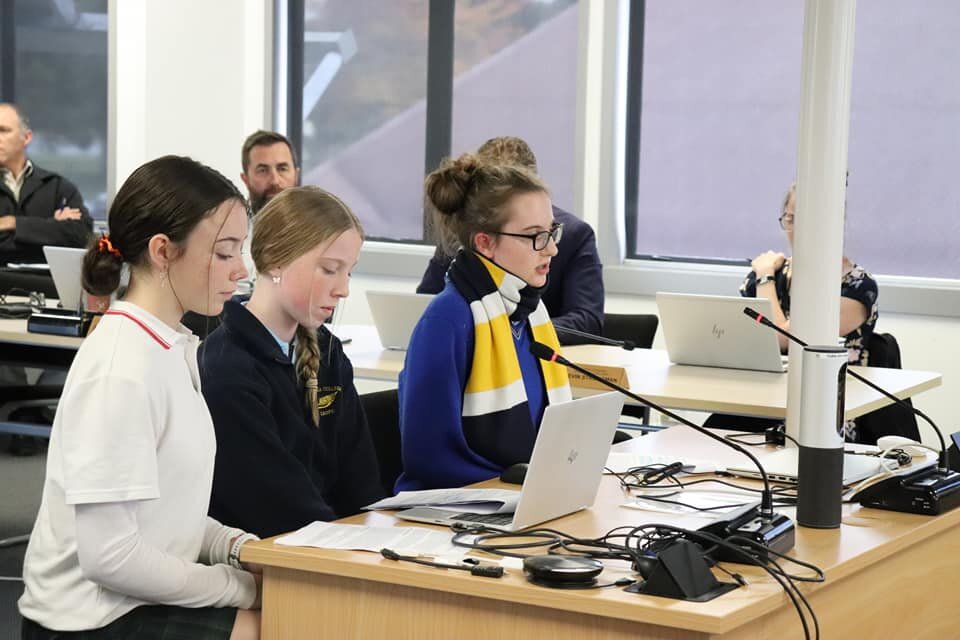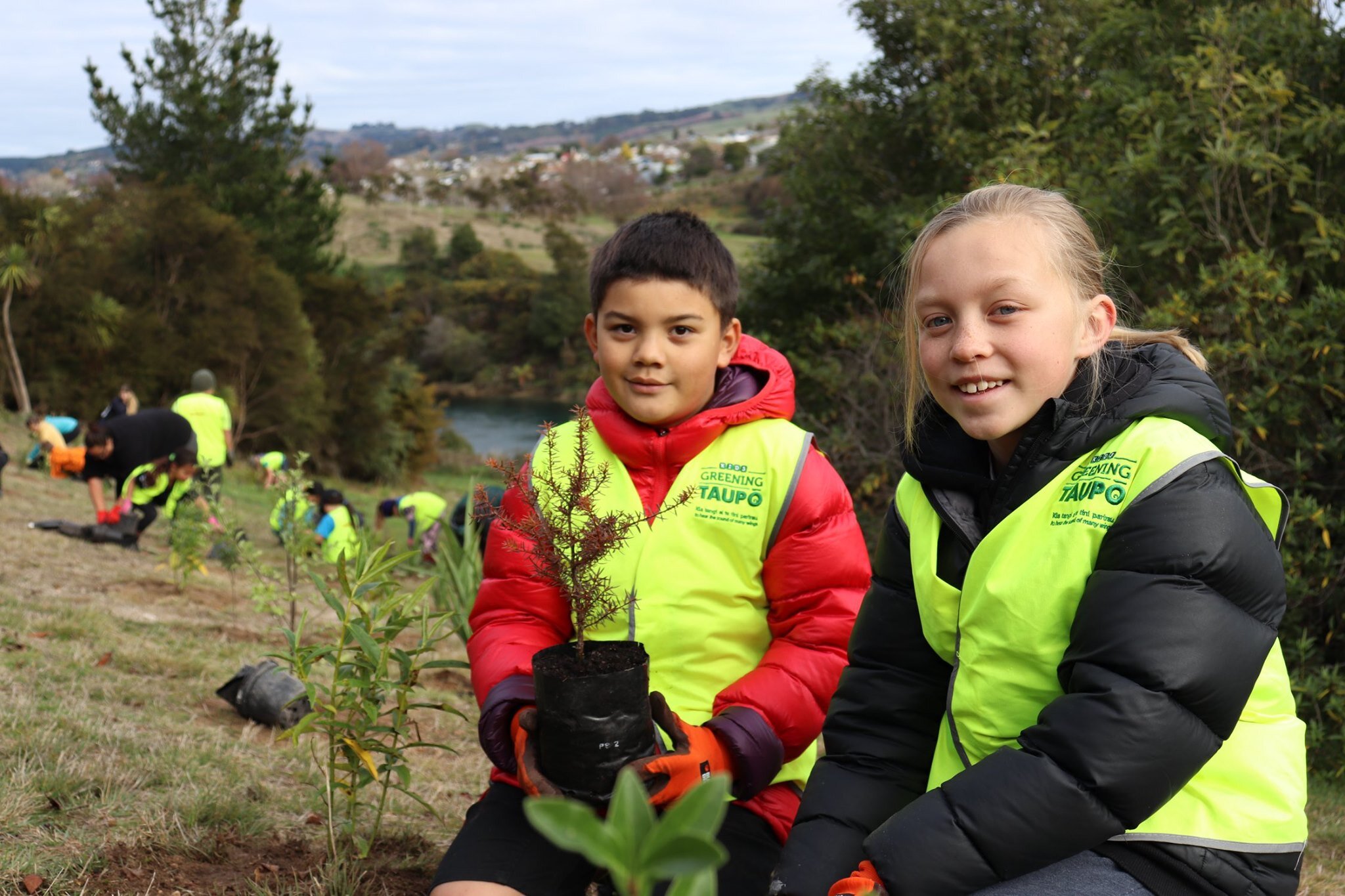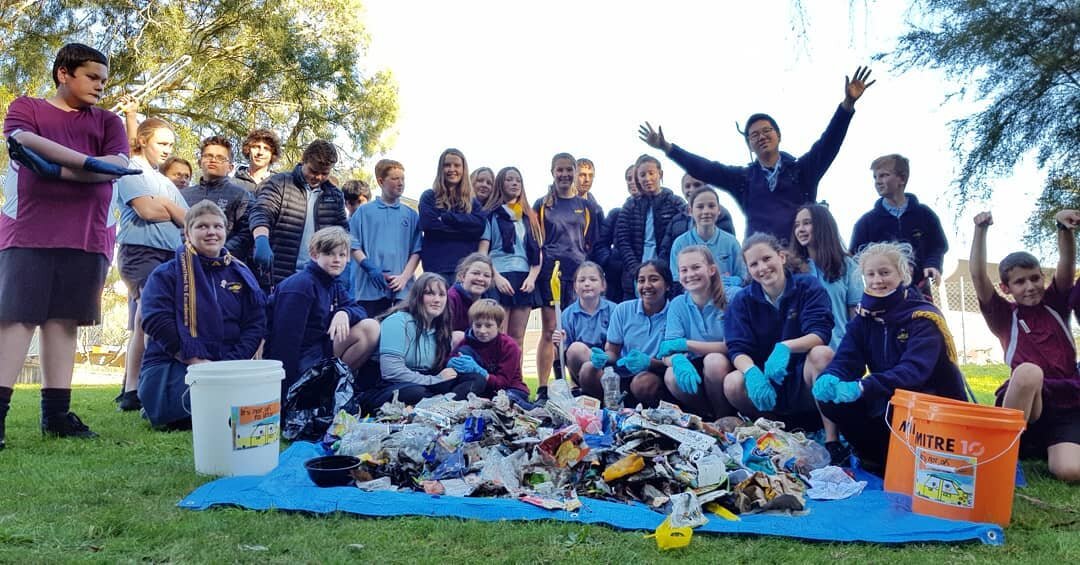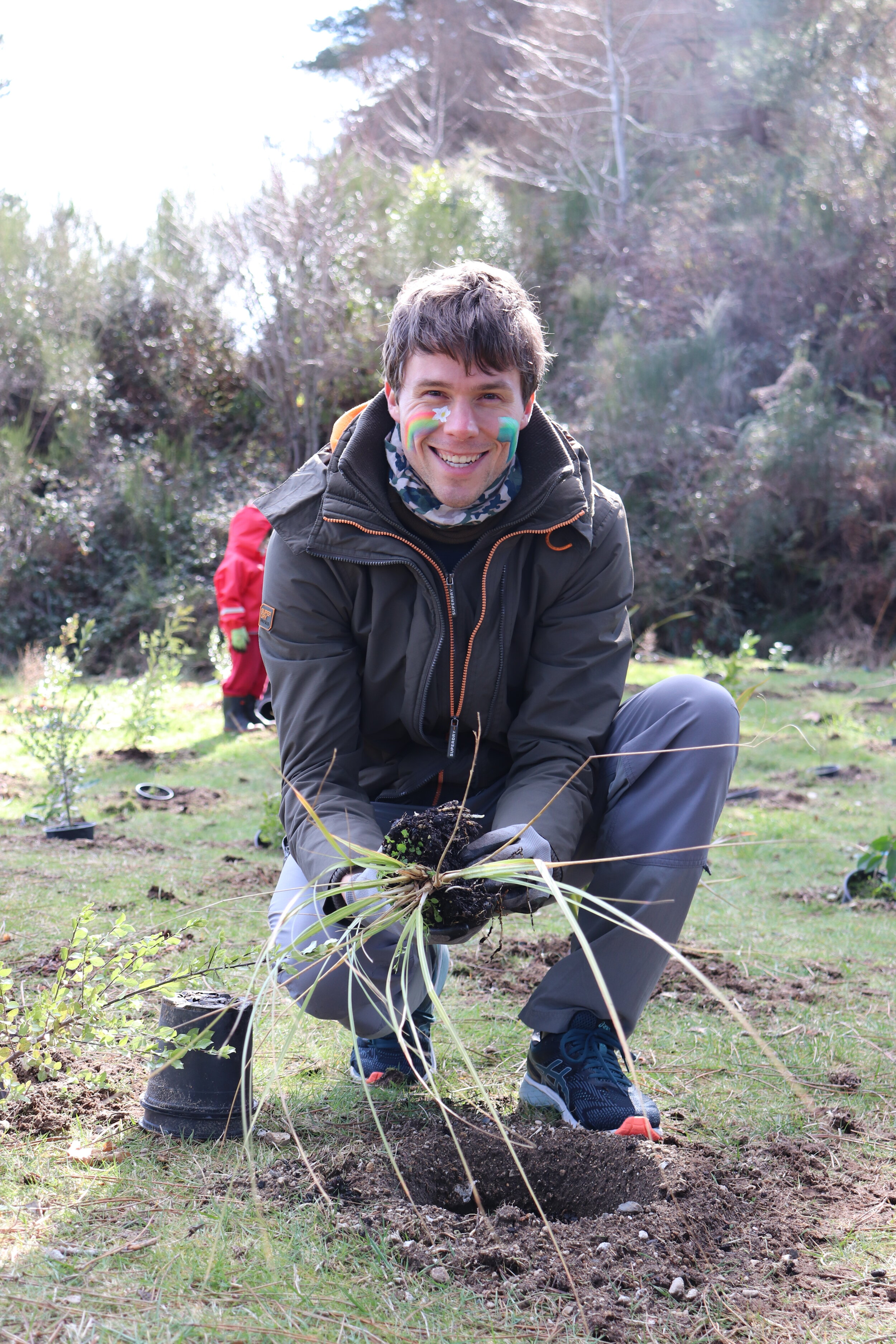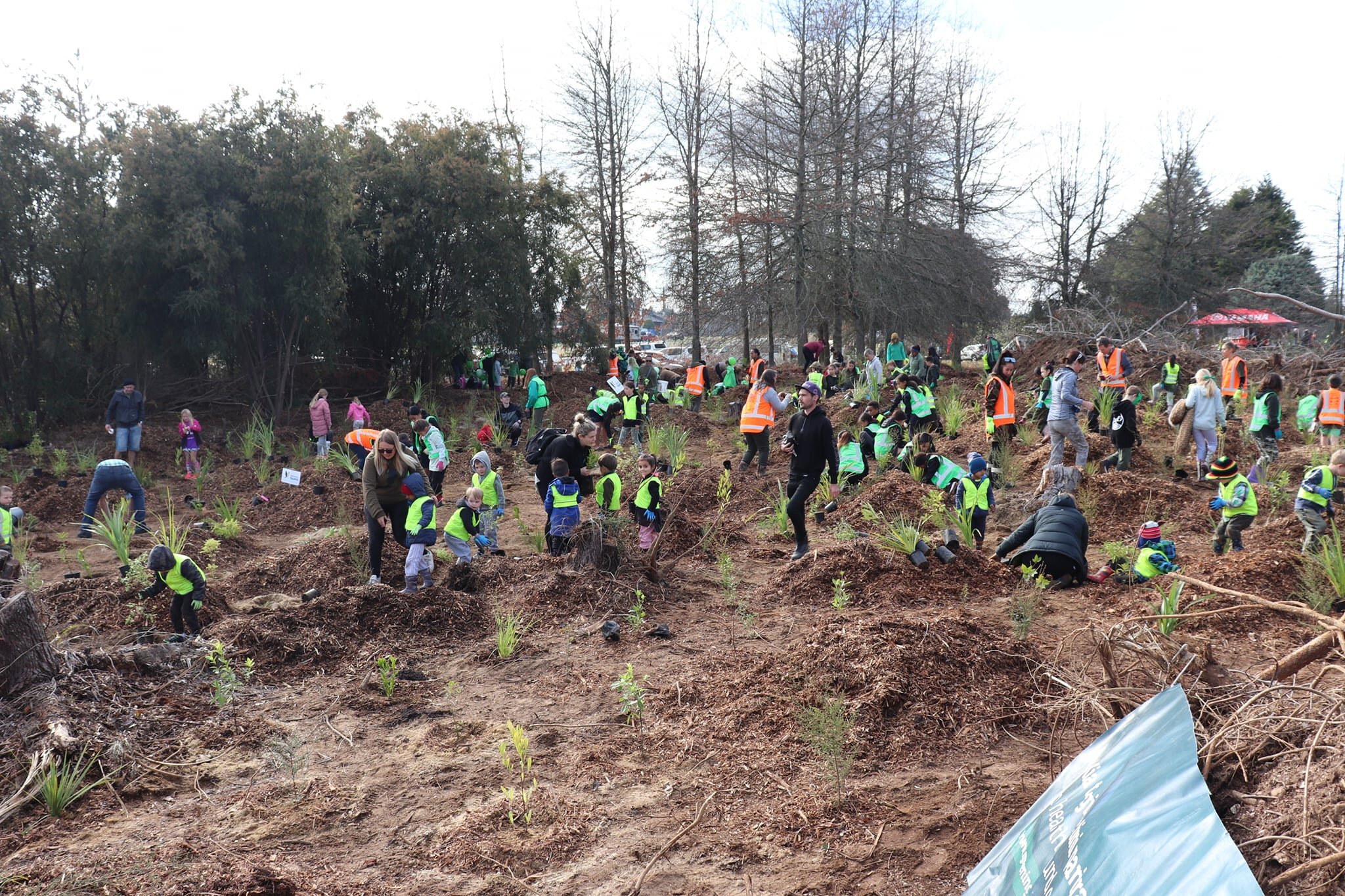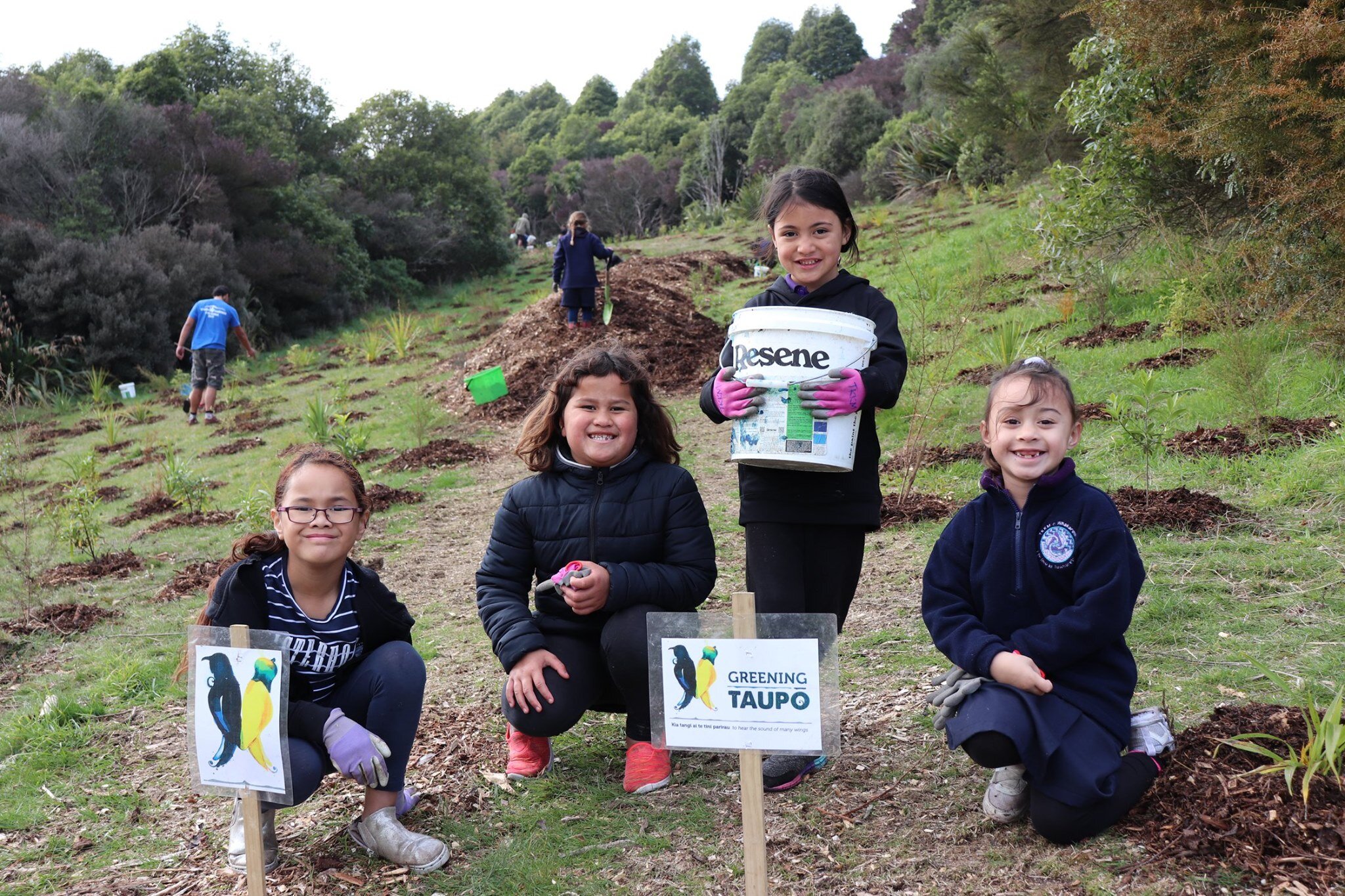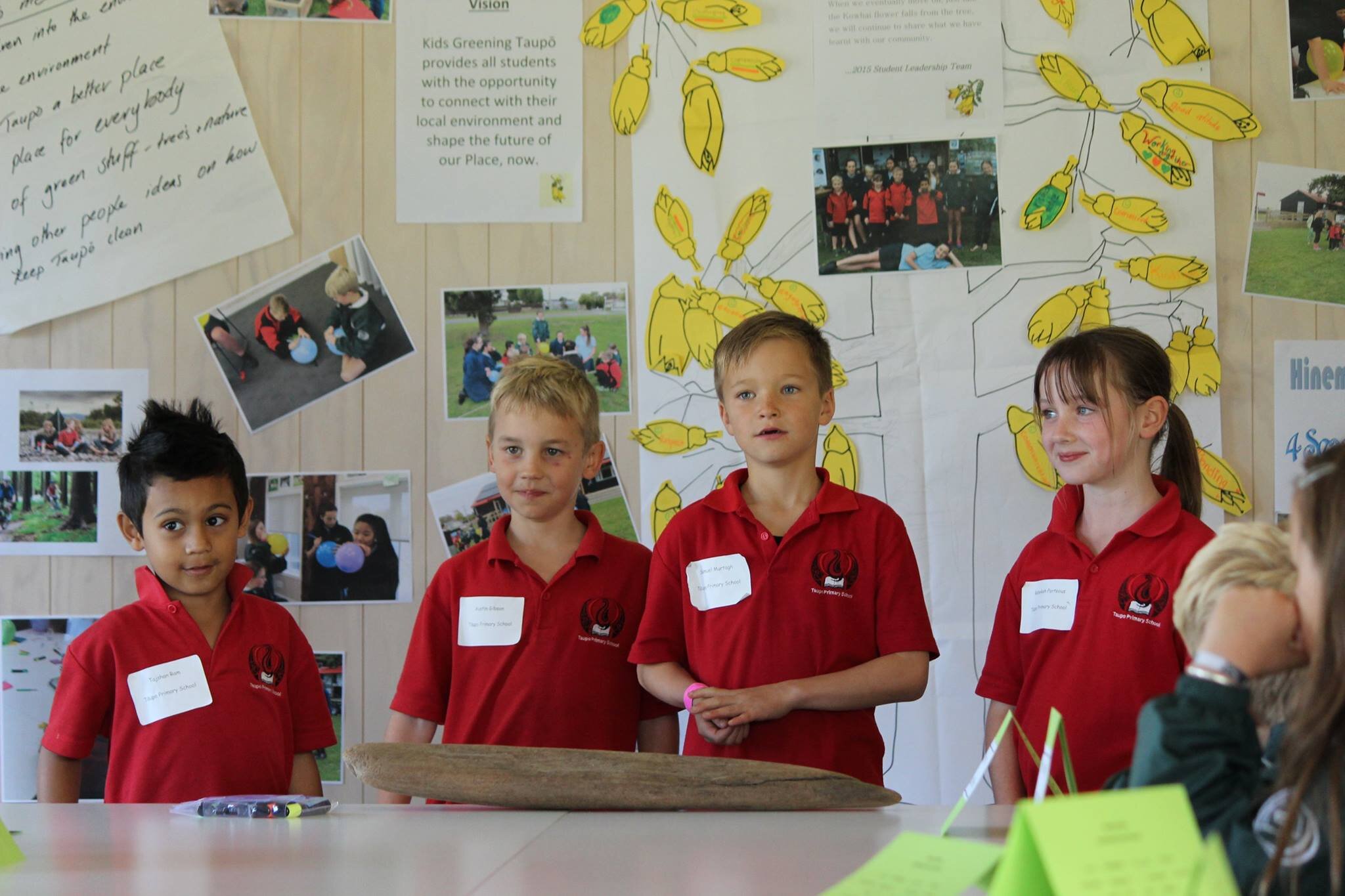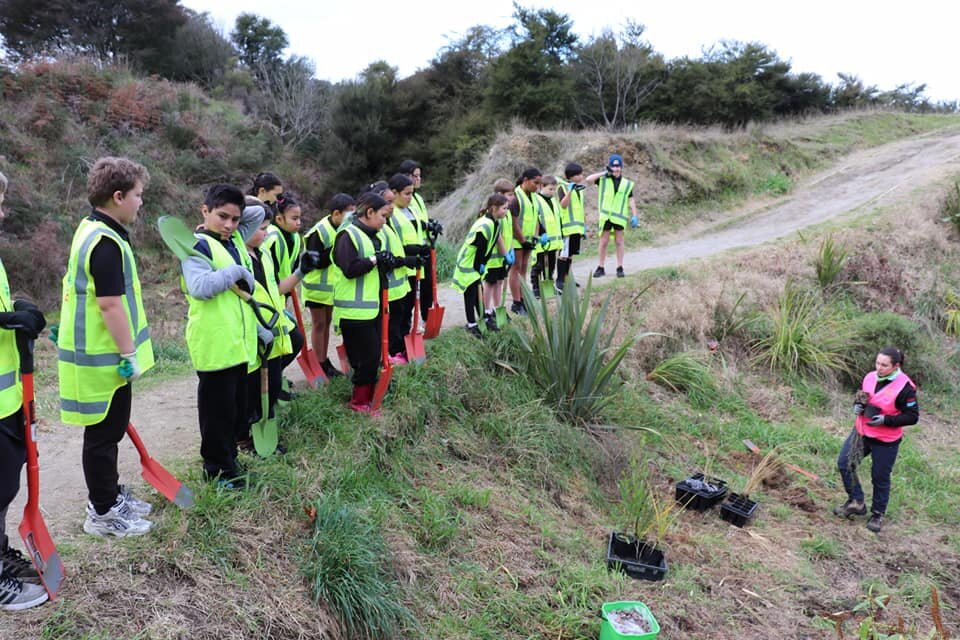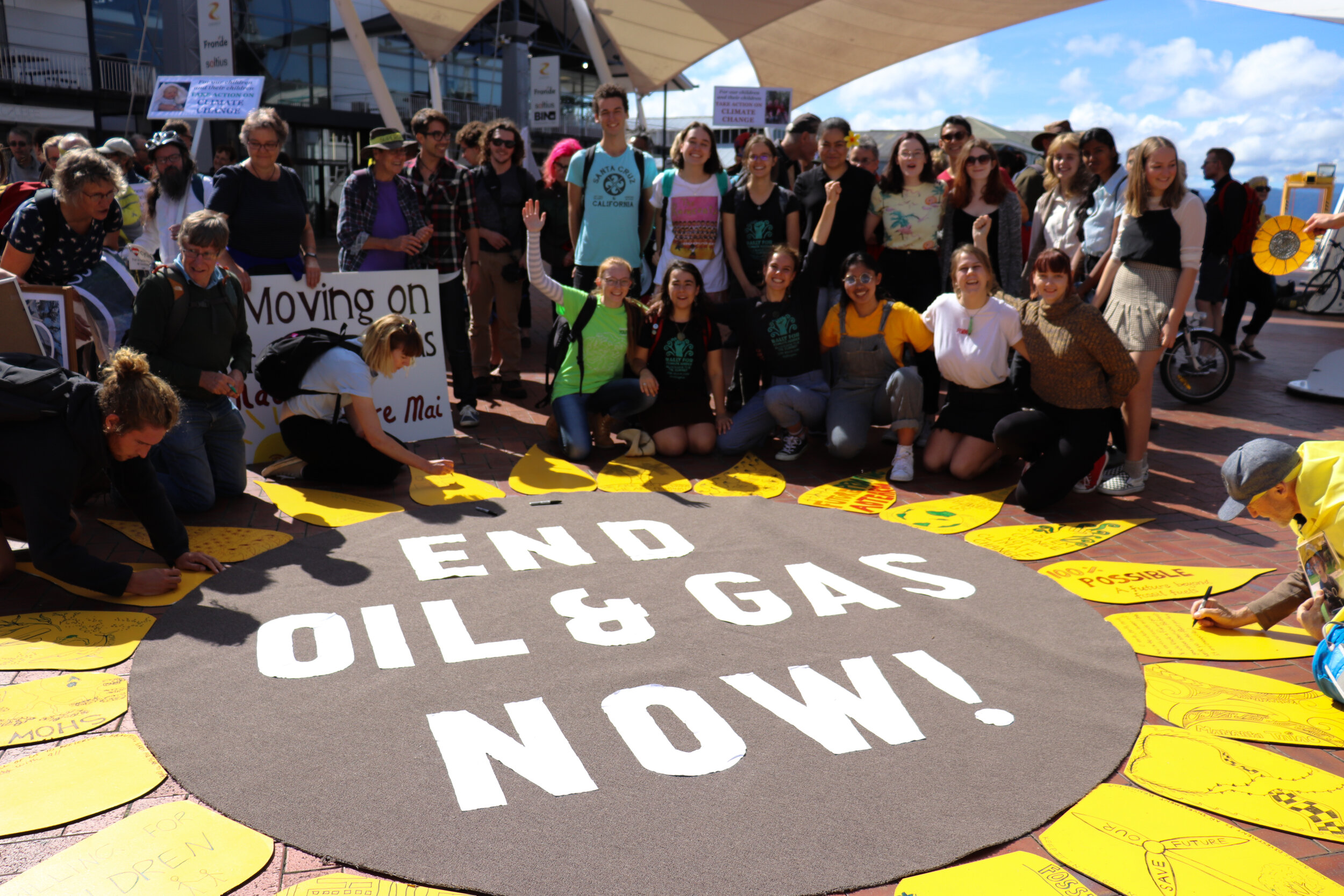Climate Change
Nau Mai! Welcome to the Kids Greening Taupo Online Nature Classroom!
Online Nature Classroom all about Climate Change
What is Climate?
Climate is the average weather of a given area over a long period of time. This includes seasonal temperatures, rain, sunshine, and large weather events such as storms.
What is Natural Climate Change?
Throughout history the Earth’s climate has changed naturally. This natural climate change is caused by changes in volcanic activity, sunlight, currents in the ocean, orbital changes, and solar variations. Over the past 2.6 million years these changes have seen Earth pass through periods of freezing temperatures- Ice Ages, and Interglacial (warmer) periods. The Ice Ages form over thousands of years where the climate is colder and allows for more water to be locked up in glaciers on the land. The last Ice Age ended over 10,000 years ago.
So when can we expect the next Ice Age to be?
If the Earth had continued in it’s natural cycles scientists would be able to predict when the next Ice Age might be by looking at historical data. This data can be gathered through sampling ice, fossils and other ancient evidence of climate. However, scientists have discovered that the climate of Earth no longer follows these natural cycles. Instead, humans have changed the Earth’s climate.
What is Anthropogenic Climate Change?
Anthropogenic Climate Change is the human caused rapid change in global climate, occurring faster than natural and historical climate changes.
Why is Climate Change considered a crisis?
Some human practices pull resources up from deep within the earth - this does not happen naturally. These resources include coal, gas and oil, and are called fossil fuels. These resources are a fuel because they hold energy, and when we burn them we can use that energy. The downside is that during the burning process, other gases can be released into the atmosphere that have the effect of changing the climate. We call these Greenhouse Gases.
What are Greenhouse Gases?
Greenhouse gases are the gases that gather in our atmosphere and create a ‘blanket’ that traps the heat from the earth’s surface, just like a blanket on your bed traps the heat your body radiates. This blanket of gases increases the temperature of the earth, just as a blanket on your bed keeps you warmer. The effect is like how the air inside a greenhouse is kept warm, this is why we call them greenhouse gases.
SOME EXAMPLES:
Oil is used to make petroleum (petrol) and plastic. Cars, factories, and lots of other things rely on oil, but burning it releases carbon dioxide gas.
Landfills (rubbish tips), and some farm animals (including cows) create another kind of gas called methane. Landfills create methane when organic matter decomposes without oxygen (anaerobic), and cows create it when they burp and fart!
Other Greenhouse Gases include water vapor, nitrous oxide and ozone.
How do Greenhouse Gases affect Earth?
As Greenhouse Gases are added to the air, they make a thicker blanket over the earth, warming the planet. That affects natural weather systems, increasing droughts and floods, as well as bigger, nastier storms. These increasing temperatures lead to water expansion, and the ice sheets start to melt, both of which lead to global rises in sea levels. All of these changes impact the security of water, food and shelter for all of life on Earth.
What can we do to help?
It may seem all doom and gloom, but the most significant message that we can take from this is that climate change has been caused by us humans, and therefore we have the power to start solving this challenge. As an individual we may seem small but, when we come together to take action, as kaitiaki and advocates for papatūānuku (Earth); we can create large-scale positive change in our communities, and make greater change for global challenges.
In this Online Nature Classroom we will be diving deeper into the ‘Greenhouse Effect’, have an opportunity to calculate our ‘Carbon Footprint’, learn how to mitigate (reduce our impacts) and adapt to our environment to the impacts of climate change, and discover how banding together as a community can help us solve this challenge.
An introduction to climate change for younger students:
An introduction to climate change for highschool students:
Documentaries we recommend watching:
Resources for EDUCATORS:
Head to the bottom of this page to find a range of wonderful resources for educators based on Climate Change education!
Our ‘Fill your Kete’ section will provide you with some fun nature activities based around our topic. As this topic is climate change, our activities are based around the ‘Greenhouse Effect’, calculating our ‘Carbon Footprint’, mitigation, adaptation, and climate action.
Climate science
As we said earlier Greenhouse Gases are the gases that gather in our atmosphere and create a ‘blanket’ that traps the heat from the earth’s surface, just like a blanket on your bed traps the heat your body radiates. This blanket of gases increases the temperature of the earth, just as a blanket on your bed keeps you warmer.
Today’s activity is to test out how this blanket of Greenhouse Gases warms the Earth.
In this exercise you are the Earth.
Sit still for a minute, think about how you feel, can you feel any changes in temperature? A draft or breeze? The sun shining on your body? The temperature of the air?
After the first minute of observation you will wrap yourself in one blanket layer and see how you feel again. Can you feel the same things as before?
Put on another blanket. Can you feel your body getting warmer? Have you noticed that the temperature isn’t changing as much anymore?
You can take your blankets off now.
Imagine being constantly surrounded by layers of blankets even in the summer. That would be pretty uncomfortable! Unfortunately, the blanket layers represent the Greenhouse Gases currently surrounding Earth.
Now that we know how Greenhouse gases impact the Earth, let’s take a closer look at Climate Change in Aotearoa . Watch this video to learn what our weather could look like under different climate scenarios:
mātauranga MĀORI AND CLIMATE CHANGE
How will Climate Change impact Aotearoa’s Tangata Whenua (people of the land) and mātauranga Māori (local indigenous knowledge)?
Indigenous communities around the world are already seeing the impacts of Climate Change. As Papatūānuku’s (Earth Mother’s) health declines, so does the health and wellbeing of Tangata Whenua. In Te Ao Māori (Māori worldview), the whenua (land) and taonga (treasured) species are whānau (family), tūpuna (ancestors), and Atua (gods). Māori are part of the environment around them, it is part of their identity, and so they feel a deep sense of connection to their local environment. Māori knowledge and values have been passed down through generations verbally, and today through written form as well. This rich knowledge stretches back to when Māori arrived in Aotearoa and teaches current generations about sustainability, timing of environmental events, time to harvest kai (food), as well as many other things. These environmental observations tell us how the land and species have changed over time, teach us how to care as kaitiaki (guardians), and conserve and restore Aotearoa’s beauty today.
Learn more about:
The impacts of Climate Change on Maramataka (timing of events)
Today we would like you to research your local area and how Climate Change could change the environment around you. Create a poster to share what you have learned with your community (this might be your family, friends, class, or wider community… you could even share your poster with your local councillors and mayor, or the Prime Minister).
Collective action:
Planting trees to combat climate change
Alongside Greening Taupo, we aim to improve the Taupo environment for the people and native wildlife. Through creating native plant corridors throughout the Taupo district we are not only increasing the local biodiversity, but we are also creating ‘carbon sinks’ which help us reduce Climate Change!
How do plants reduce climate change?
Plants use carbon dioxide gas (a Greenhouse Gas), sunlight, and water to make glucose (sugar) and oxygen in a process called photosynthesis. When we plant trees they pull in and store the carbon dioxide from the atmosphere. This reduces the amount of that Greenhouse Gas in the atmosphere and therefore reduces climate change.
HERE is a beginner level video talking about the process of photosynthesis.
HERE is an advanced level video talking about photosynthesis and carbon sequestration.
Take action:
Restoring and conserving our native species and habitats helps reduce climate change.
Learn more about plants in our plants themed Online Nature Classroom.
Curiosity questions
Aotearoa is home to many unique taonga (treasured) species and environments.
We now know that Climate Change impacts the weather systems, increases the climate and raises sea levels, but did you know that these can also change the behaviours of flora (plants), and fauna (animals)?
Today’s activity: Choose one of Aotearoa's native species to research. How could climate change impact that species? Is there anything we can do to help that species or make the environment around it more resilient to climate change?
Example-
One impact of Climate Change on trees: Trees seem to be producing more fruits and seeds than usual with the higher temperatures which is known as a seed ‘mast’. When food is abundant, pest species breed more frequently. Unfortunately, these pest species cause major decline in our native bird, insect, lizard and bat species.
One solution: If we set up community traplines through forested areas to reduce the pest numbers, we would be able to help some of our precious native species survive.
BLAKE NZ has a great website to help with today’s activity.
KI TE PANUI/ TO READ
This ki te Panui section is based on Climate Change.
Head to the section below for the read aloud story, What Does It Mean To Be Green? Written by Rana DiOrio
If you already have this book make sure you head outside to connect to nature whilst enjoying it!
After reading/listening to the book make sure to try the follow up activity where you will calculate your individual Carbon Footprint and make a pledge to reduce your emissions/do your part to reduce Climate Change.
In each Online Nature Classroom we will give book suggestions along with at least one video read aloud.
This recommendation is What Does It Mean To Be Green?
Watch the read along below-
Follow up activity:
Calculate your carbon footprint and make a pledge:
A carbon footprint is created when people use energy sources called fossil fuels that release carbon dioxide, which is a type of greenhouse gas. Measure your carbon footprint HERE.
what can you do at home to reduce your carbon footprint?
make a pledge:
Here are some ideas for making your own pledge (a commitment to reducing your individual carbon footprint):
Plant trees- come along to our local community planting days! Keep an eye out for dates HERE.
Reduce your plastic use- make beeswax wraps HERE.
Shop at your local fruit and vegetable market
Drive/fly less- try to bike or walk more often
Eat less meat
Sign a petition
Write a polite letter to an unsustainable business letting them know that you would like them to be more sustainable
Speak up/ Kōrero with your friends and whānau about Climate Change.Learn how to talk about Climate Change in this VIDEO.
Take the next step:
Contact your MP or local Council and find out what they are doing to make our economy and country greener, and make it clear to them that you care about climate action. Voices matter!
Rally your friends together and organise a School Strike march, or similar.
Political action is a big part of the story, as it is governments and big businesses that set the rules for how we all live our lives, what we can buy, etc.
Use our template below to write out your unique pledge:
If we work together we can make great change
OTHER BOOK SUGGESTIONS (climate change):
For activities based on the ‘Aroha’ books check out our Nature Connectors ‘Learn with Aroha’: https://www.kidsgreeningtaupo.org.nz/learn-with-aroha
Resources for EDUCATORS:
How to Talk about Climate Change: Resources based on different learning stages.
Bicycle model on Climate Change Education.
Harnessing Education’s Power for Positive Climate Action.
Head over to our nature connector ‘Learning about Climate Change’ to find a bunch of incredible resources for your teaching.
Do you want to learn more about the Zero Carbon Bill? Watch THIS VIDEO.
Accessible climate data: IPCC Interactive Atlas.
The United Nations has come up with Climate Change Superheroes and made ‘missions’ for kids to take on to become one of the superheroes.
Here are some suggestions of things that you might be able to do.
The Pūtātara Toolkit provides information and links on a range of resources that you will find helpful in teaching and learning about sustainability and global citizenship.
Journal articles that you can find at school, or online:
School Journal, Part 3, Number 1, 2011, How Big is Your Footprint
Tricia Glensor, Climate Change: Our Biggest Challenge, School Journal, Level 4, June 2018
A few videos to help empower and support your students in local School Strikes 4 Climate:
